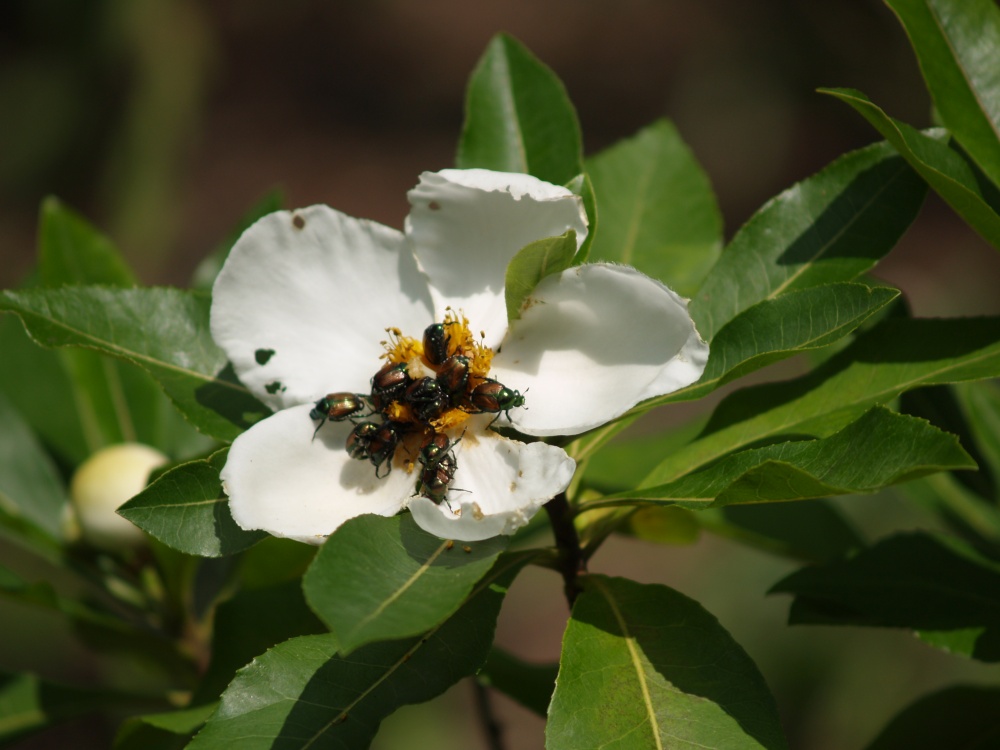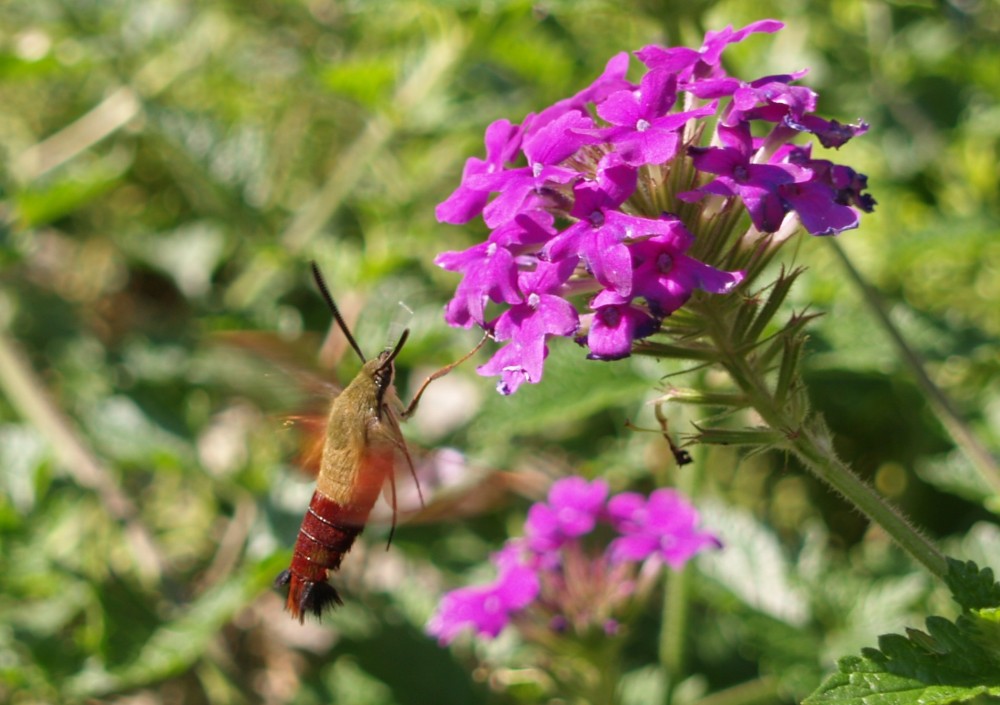I realize that I am unhappy to see a flower in midsummer not occupied by a bee, butterfly, or pollinator of some sort. This fascination does not include Japanese beetles (below), which seem to be enjoying an extended stay in the garden, spoiling too many blooms. It seems a crime to lead a story with a photo of these pests, but there it is. Since I do not spray to rid the garden of pests of any sort, I gain some satisfaction by flicking the beetles from low hanging flowers. Certainly, they are not dissuaded, and must return quickly, but it seems I should be allowed a few small pleasures, no matter how nonsensical.

I’ve lost track of a reference to judge the abundance of beetles in the garden, but I suppose their numbers are small, and the damage they inflict is limited. Certainly, there are sufficient numbers of birds, so perhaps this keeps the beetle population in check. But, enough about pests.

Fortunately, I am seldom disappointed, and particularly now that Tiger swallowtails (above) have reappeared in recent weeks there is a wonderful diversity of pollinators in the garden. There are disproportionate numbers of gentle mannered bumblebees and angry and aggressive wasps, but also honeybees, hoverflies, and moths (Hummingbird moth, below), as well as other smaller bees I cannot identify.

Increasingly, gardening to please these pollinators (as well as other beasts that inhabit the garden) is a priority as much as my personal satisfaction. It seems I must be getting soft as I age, or perhaps there is some knowledge that eventually sinks into the hardest of gardeners’ heads. In any case, a few blemished blooms from beetles and caterpillars is inconsequential compared to the benefits of a garden with croaking frogs, chirping birds, and buzzing bees.

While tempted to plant more natives, this garden is long established, and will continue to be a mix, with Japanese maples (Acer palmatum) planted alongside Eastern dogwoods (Cornus florida) and rebuds (Cercis canadensis). It surprises and disappoints that many of the red fruits of the Chinese dogwood (Cornus kousa, above) have ripened and fallen to the ground this summer. The fruits are more abundant than in recent years, and certainly these are too large for most of the garden’s small birds. I understand, the cycles of nature are unpredictable, so whatever bird that has stripped these in prior years must be occupied elsewhere, but still I am disheartened by this waste.

Bees and butterflies are most dependable. On any sunny day, if there is a bloom with nectar, there will be bees. If bees and wasps were not determinedly occupied gathering nectar from the Mountain mint (Pycnanthemum virginianum), walking past might be too dangerous to stop to enjoy this buzz of activity. Butterflies seem wary to join the frenzy, though they will step in on a cloudy afternoon when the attraction is not so strong.
I find that as long as I move slowly and deliberately the bees and wasps in my garden don’t mind me. I really enjoy watching them. Next summer I’m hoping to take a class on identification of native pollinators to help me recognize all of the great diversity I get in my yard. I feel a bit smug, knowing that I’m helping out the local ecosystem instead of harming it with pesticides like so many people seem to do.
PS. If you want to reduce Japanese beetle numbers you can always catch them by hand. My mom uses a milk jug with soapy water to dispose of them. I don’t have enough to go to that kind of trouble.
From the photo you might suspect that there’s an abundant population of beetles, but I rarely see any foliage damage. The worst is on Ostrich ferns much earlier in the summer, but otherwise I see only scattered beetles on a few flowers. Certainly, not enough to be concerned about, and too few to substantiate walking around with a jug of soapy water. I don’t wish to kill the beetles, just convince them to go somewhere else.